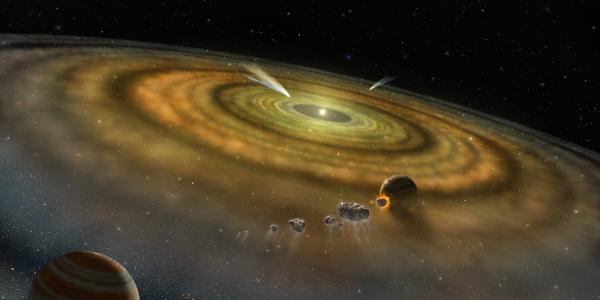Physics Colloquium with Nick Ballering on New Views into Planet-Forming Dust and Ice
Nick Ballering (Hosted by Gillis-Davis) from University of Virginia will be presenting the colloquium "New Views into Planet-Forming Dust and Ice"
How common are Earth-like planets around other stars? Do they have the materials necessary for life? Do they reside in planetary systems like our own? Studying circumstellar disks provides a unique and powerful way to address these questions. Protoplanetary disks are the birthplaces of planets, while debris disks and white dwarf disks host the material leftover from planet formation. Ballering will present his research program to characterize the dust and ice in these disks. He uses data from telescopes across the electromagnetic spectrum, including HST, ALMA, and JWST, coupled with novel modeling procedures. Panchromatic imaging of debris disks measures the dust color and albedo, constraining the composition of solids in these system’s outer regions. Infrared spectra of warm dust around main sequence and white dwarf stars reveal the dust mineralogy. This offers a point for comparison with leftover planet-forming material in the solar system. Measuring the dust in protoplanetary disks indicates whether they have sufficient mass to form planets like those in the solar system. Ballering will highlight ongoing work with ALMA to measure disk masses in the Orion Nebula Cluster (a region of typical star and planet formation). Finally, Ballering will detail recent work combining disk chemical evolution and radiative transfer models to simulate spectral signatures of ices in protoplanetary disks. JWST is poised to revolutionize our view of disk ices, and such models are crucial to interpret these observations. Ices play central roles in planet formation and the delivery of biocritical volatiles to terrestrial planets. Thus, measuring the abundance and distribution of disk ices is a key step in understanding the prevalence of habitable planets.


